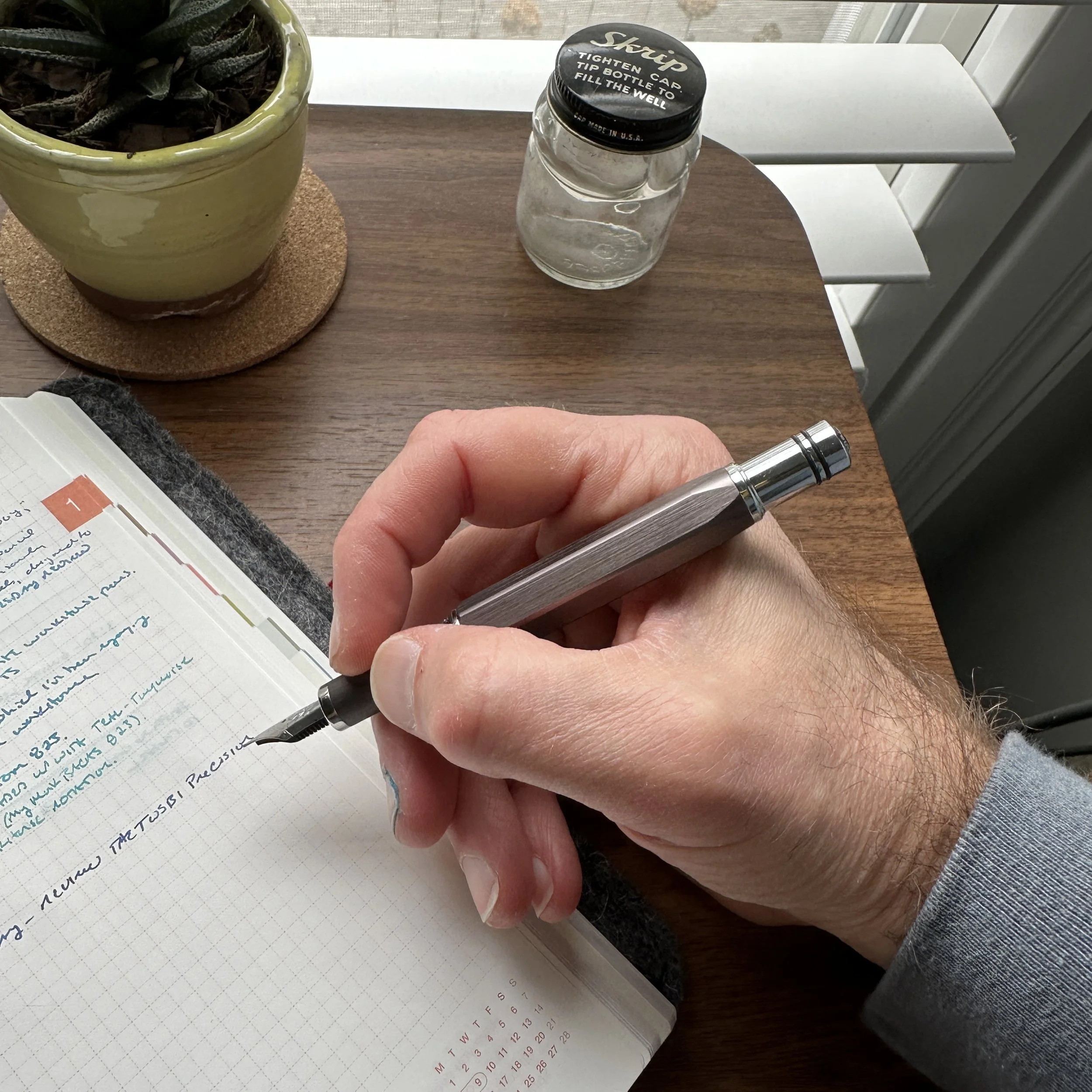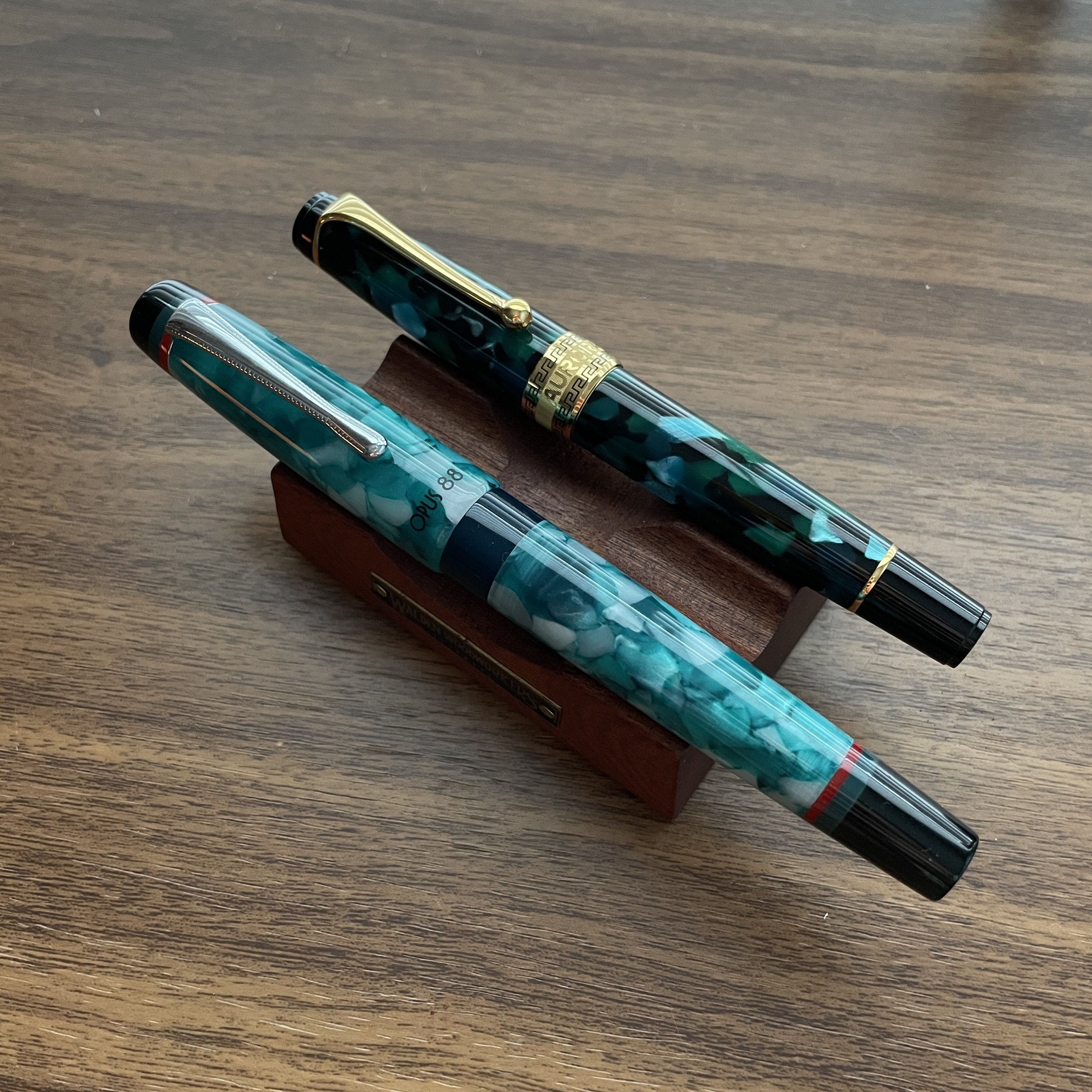Platinum rules the sub-$20 fountain pen space, at least among the larger, more mainstream pen brands. While Pilot and TWSBI have their own inexpensive “entry level” releases in the Kakuno and the Go, respectively, no company has as many different options at this price point as Platinum. Most fountain pen users are familiar with the Platinum Preppy and the Platinum Plaisir, but there’s yet another option that’s gaining some steam since its release a couple years ago: The Platinum Prefounte.
Priced to sit in-between the all-plastic Preppy fountain pen and the more upscale Plaisir, the Prefounte features a transparent plastic barrel in a new set of colors and with a more durable metal clip. While the Prefounte uses the same nib/feed/section as the Preppy (they are interchangeable), the barrel itself feels slightly more substantial than on the Preppy, and I enjoy not having to worry about the clip snapping off if I overextend it. All of Platinum’s pens are capable of taking both a cartridge and a converter (though they are proprietary and can only be used on Platinum pens), and I see nothing that would prevent you from eyedroppering the Prefounte by adding silicone grease and/or an o-ring to eyedropper the pen the same way you would modify a Preppy.
Who is this pen targeting? I would say those looking for an inexpensive everyday pen for the office or travel, as well as those experimenting with fountain pens for the first time but who don’t want something that looks as “disposable” as the standard $4 Preppy. At $11, the Prefounte also falls into what I think of as the zero-risk gift zone: a pen that you can easily gift to friends and family who you think might like fountain pens, without worrying about spending a lot of money on something they may or may not end up using.
For the last minute trip I had to take this weekend (yes, two days before a shop move), I grabbed some travel-ready pens, including one of the new Platinum Preppy Wa limited editions, this Vermillion Orange Prefounte, and my yellow/green Plaisir with the desk pen nib installed. All of Platinum’s lower-priced pens use a version of the slip-and-seal cap system, which prevents the pen from drying out. Though I’ve never tested the “one-year” claim, it works very well.
I’ve personally been thinking a lot about entry-level fountain pens lately. As I build out inventory in advance of a physical shop opening, I want to have as broad a range of options to offer as possible, especially for those people curious about fountain pens who inevitably will want to come in and see them in person before committing. Being able to show someone a nice looking pen with a reliable nib, functional clip, multiple color options, and the ability to use cartridges or bottled ink, all for $11, makes the hobby much less intimidating for new users.
We currently have the Platinum Prefounte available in all five colors: Night Sea, Dark Emerald, Crimson Red, Graphite Blue, and Vermillion Orange. The colors are all on the darker side and look quite nice, especially the blues and the orange, which I picked out for my tester. Nib options are fine (03) and medium (05), and each pen ships with a Platinum Blue-Black Cartridge. Converters and other cartridge options are sold separately.
The Gentleman Stationer is supported by purchases from the T.G.S. Curated Shop and pledges via the T.G.S. Patreon Program.
Platinum’s stainless steel nibs aren’t fancy, but they are consistently decent writers that lay down a standard fine or medium line.





